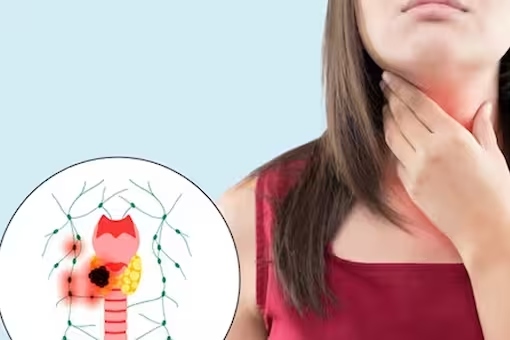Thyroid has become a common condition nowadays among people. Do you know thyroid can also lead to cancer? It is a type of cancer that starts in the thyroid gland. Cancer starts when cells begin to grow out of control. The thyroid gland makes hormones that help regulate our metabolism, heart rate, blood pressure, and body temperature. There are different types of thyroid cancer.
The main types of thyroid cancer include:
1. Differentiated (including papillary, follicular, and Hürthle cells)
2. Medullary
3. Anaplastic (an aggressive cancer)
Thyroid cancers could be deadly. Today, let’s take a look at the various causes and prevention of this disease.
Causes
1. If a person has a family history of the faulty gene called the RET gene, they could be prone to thyroid cancer.
2. If one is having a thyroid condition such as an enlarged thyroid (goitre) or thyroid nodules.
3. Exposure to some forms of radiation, such as childhood radiation therapy treatment, may also lead to thyroid cancer.
Thyroid cancer treatment
The treatment of thyroid cancer mainly depends on the degree of the thyroid. Apart from this, the patient’s age and gender also plays an important role in the treatment process. As per experts, various treatment options are available, only if the tumour is under control and not very large. It can be surgically removed. This indicates that there is a good chance of recovery and survival of a patient with early detection and treatment.
If one has a thyroid, they should always be alert and keep consulting the doctor regularly. The treatment process includes palliative care, surgery, T4 therapy, radioactive iodine treatment, radiation therapy (radiotherapy), and chemotherapy.
Diagnosis of thyroid cancer
Tests to diagnose thyroid cancer may include:
1. Blood tests: A blood test will check the levels of hormones (including T3 and T4) and the thyroid-stimulating hormone (TSH).
2. Ultrasound: A painless scan that takes about 20 minutes produces pictures of internal organs.
3. Biopsy: A doctor removes some of the thyroid tissue for examination under a microscope.
4. Radioisotope scan: This test is usually done if blood tests indicate an overactive thyroid (hyperthyroidism).
5. Other scans.


